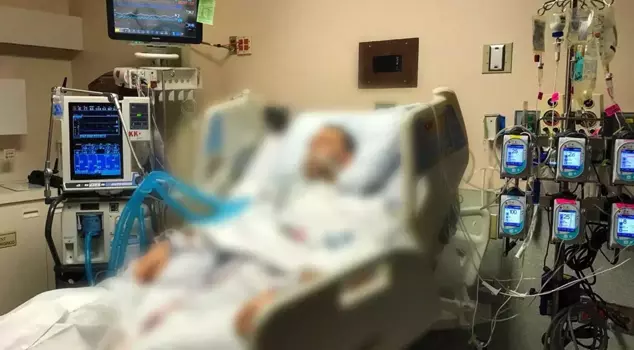
04.06.2025 20:41
The Ministry of Health issued a warning regarding Crimean-Congo Hemorrhagic Fever, commonly known as "tick fever," ahead of the Eid al-Adha holiday. The ministry stated that the disease can be transmitted not only from animals but also from humans. It advised individuals who have come into contact with ticks to monitor themselves for 10 days, and those who have been in contact with infected individuals or viremic animals to observe themselves for 2 weeks.
The Ministry of Health has warned that individuals who have been bitten by ticks or have come into contact with ticks should monitor themselves for at least 10 days, while those who have had direct contact with the blood and body fluids of infected humans or animals in the viremic phase should monitor themselves for 2 weeks.
MINISTRY OF HEALTH'S WARNING ON "CCHF"
According to a statement from the Ministry, Crimean-Congo Hemorrhagic Fever (CCHF) can be transmitted through tick bites or contact with ticks and can lead to loss of life. CCHF cases, which drew attention in the Central Anatolia Region in 2002 and were definitively diagnosed in 2003, are actively monitored by the Ministry of Health through the "CCHF Case Notification Form" and the "CCHF Information System" introduced in 2011.
The diagnosis of the disease is made in reference laboratories designated by the Ministry, and centers operate in 19 regions for patient referral and treatment of the disease. The "CCHF Case Management Guide" prepared by the Ministry came into effect this year.
TRANSMISSION FROM HUMANS AND ANIMALS
The disease can also be transmitted through unprotected contact with the blood, tissues, and body fluids of animals in the viremic phase and infected individuals, in addition to tick bites or contact with ticks.
"DO NOT TOUCH WITH BARE HANDS"
CCHF can progress in animals without showing symptoms, so it is essential to avoid contact with the blood, urine, and other body fluids and tissues of animals, especially in regions where the disease is frequently observed, using bare hands.
It is important to take necessary protective measures, such as wearing gloves, to prevent the transmission of the disease.
During the sacrificial holidays, it is recommended to pay attention to cleanliness and hygiene rules, starting personal protective measures before the sacrifice.
ATTENTION TO THOSE SHOWING CCHF SYMPTOMS
Individuals who have been bitten by ticks or have come into contact with ticks should monitor themselves for at least 10 days, while those who have had direct contact with the blood and body fluids of infected humans or animals in the viremic phase should monitor themselves for 2 weeks.
During this period, if symptoms such as weakness, loss of appetite, fever, muscle and headache, nausea, vomiting, or diarrhea are observed, it is crucial to seek medical attention at the nearest healthcare facility without delay.
When going to tick-prone areas such as fields, vineyards, gardens, and picnic areas, it is recommended to wear clothing that covers the body as much as possible to prevent ticks from entering the body, tuck pant legs into socks, and prefer light-colored clothing to easily spot ticks on clothing. If a tick is attached to the body, it should be removed immediately using appropriate materials (such as tweezers, gloves, cloth, and plastic bags) and medical attention should be sought at the nearest healthcare facility.
It is essential not to kill or crush ticks attached to the body or found on animals with bare hands. Since the disease can be transmitted through the blood and body fluids of infected individuals, those who come into contact with infected persons must take necessary protective measures (such as gloves, aprons, masks, etc.).
In line with the strategies determined by the Ministry of Health, training activities for healthcare personnel and the community are conducted every year. Community training is carried out face-to-face and collectively in residential areas (neighborhoods, villages, etc.) where cases have been reported in the last 3 years or new cases have been reported that year. In this context, approximately 2 million people receive training and information activities on CCHF each year.